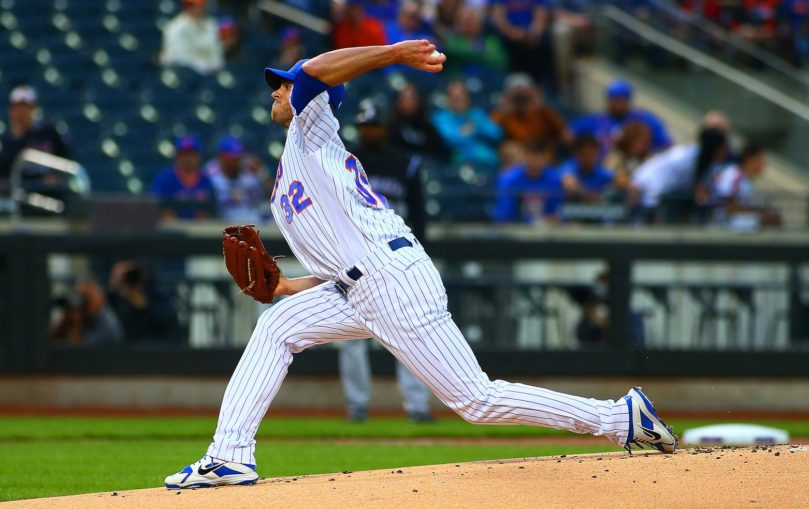
Steven Matz has allowed four earned runs or less in all eight of his starts so far this season. That’s the second-longest streak in the National League behind Max Scherzer. Of course, that’s where the similarities end between the two pitchers, but it begs a question that somehow we have no answer to nearly three years after his debut — exactly how good is Matz?
The numbers suggest the Mets are attempting to protect themselves against having Matz go through the order for the third time and with good reason so far. Opponents are posting an OPS of .892 against Matz his third time through the lineup, and he has a 1.069 OPS against him after he throws his 75th pitch. The 5.89 FIP and career high walk rate (3.93/9) also suggest that Matz might be getting a little lucky than his 4.42 ERA suggests.
However, while the numbers may suggest pitching Matz deeper into games isn’t necessarily the best course of action, there’s also an argument to be made that it’s time the Mets trust Matz more.
Probably first and foremost in that argument is the toll his starts take on the bullpen. Over those eight starts, Matz is averaging about 4.2 innings and 86 pitches per outing. That means that the bullpen is being asked to get nearly 13 outs every time Matz takes the hill. Robert Gsellman, Seth Lugo, and Paul Sewald are all on pace to push past 90 relief innings, and getting even 10 more pitches of Matz per start is an easy way to alleviate the wear and tear on those relief arms.
There’s also the need for a reliable third starter. The Mets have to find some one they can trust after Jacob deGrom and Noah Syndergaard. Matt Harvey, Zack Wheeler, and Jason Vargas have all been given that chance, but Matz has not to the same extent. He’s been asked to throw over 90 pitches just twice all year. Even in his best start (6 IP and 1 ER against Colorado), he was pulled after 88 pitches.
This ties into the last part of the equation — Matz’s confidence. It’s no secret that the mental aspect of Matz’s game is an area that has received scrutiny in the past, as it’s seemingly played a role in his long injury history. A pitcher like Matz is no doubt aware of the quick hook the team has had with him all season, and knowing you could be pulled at any second figures to add pressure to each pitch.
In the best stretches of Matz’s career during 2015 and 2016, he was regularly asked to go above 100 pitches. A period of time where Matz looked most comfortable on the mound. Of course, part of the early departures is to avoid the injuries that he’s faced over his career and to preserve his arm for the future, but is a 4.2 IP pitcher with a 4.42 ERA really what the Mets want to preserve at this point?
In the last few seasons, the Mets have taken the kid gloves off all of their young starters and pushed them at some point to make them prove their worth. With the Mets needing a third starter to make a legitimate postseason push this season, it might be time to do the same with Matz.














